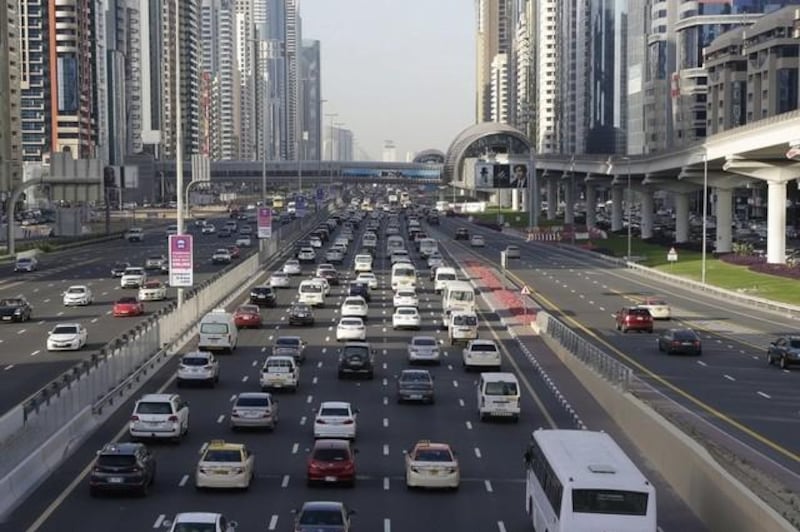ABU DHABI // The deaths of three Emirati sisters eight years ago were not inevitable, but neither were they in vain, as the UAE’s road safety improvements have the potential to save many lives.
On June 29, 2009, Shaikha Al Mansouri, 4, her sisters Damayer, 6, and Mariam, 7, and their Indonesian nanny were trying to cross the road to Carrefour on Airport Road when they were hit by a speeding vehicle.
The girls died at the scene and their nanny suffered brain injuries. She died 10 months later.
The tragedy resulted in The National’s Road to Safety campaign, which sought to bring about changes that protect drivers, passengers, cyclists and pedestrians.
"It is very risky for pedestrians to cross where there are no facilities for them, especially on the wider roads where there is fast moving traffic, often changing lanes, making it difficult to accurately gauge speed, distance, and vehicle paths," said Phil Clarke, a principal road safety consultant at Transport Research Laboratory UAE.
"Crossing these roads on foot can also take a lot longer than people anticipate, increasing their exposure to the risk."
The campaign focused on pushing for improved infrastructure, road design, raising safety standards, proper enforcement, proper traffic control, incident response and better pedestrian management. Since then, there have been awareness campaigns, rigorous law enforcement and ongoing development of pedestrian crossings, tunnels and footbridges – including where the 2009 tragedy happened.
Road safety campaigns, extra police patrols and new speed cameras have led to a substantial decline in road deaths this year.
Abu Dhabi Police said 60 people died on the roads between January and March, down from 77 in the same period last year. The number of people injured fell from 148 people to 90.
In Ras Al Khaimah, the number of road fatalities fell to 14 from 16. In Sharjah’s central region, there were six deaths this year, down from 16 last year.
The UAE has been upgrading its network of roads, investing in smart traffic systems and infrastructure, and carrying out inspections to curb the likelihood and severity of accidents, said Mr Clarke.
"Road authorities throughout the UAE are building new roads or upgrading infrastructure which are designed to manage vehicle speeds by including traffic calming measures such as speed humps in residential and commercial areas," he said.
"There’s a need to improve compliance with speed limits through structured and better targeted education, awareness campaigns, preferably aligned to enforcement and publicity."
Dubai’s Road and Transport Authority has started painting parts of roads red to make newly enacted speed limits more obvious.
The red paint gives motorists enough warning that they are able to gradually reduce their speed of their vehicles without having to apply their brakes suddenly.
Speed warning zones are already in place in parts of Abu Dhabi’s Sheikh Zayed bin Sultan Street (formerly Salam Street) and Sheikh Khalifa Highway.
In Abu Dhabi, police have activated no-flash cameras at traffic junctions that use infrared light to detect offences, including vehicles running red lights, crossing pedestrian lanes, excessive speed and turns or U-turns from the wrong lanes in Abu Dhabi city, Al Ain, Al Dhafra, Al Reem Island and Al Maryah Island.
The system led to a 64 per cent fall in the number of crashes due to cars jumping red lights between 2013 and 2016, said Lt Col Mohammed Al Shehhi of the Abu Dhabi Police’s Traffic and Patrols Directorate.
Speed bumps and other measures to slow traffic will be installed across the capital over the next two years to reduce speed-related accidents.
"I commend the UAE on its constant efforts to make roads safer," said Michael Dreznes, executive vice president of the International Road Federation, which promotes better, safer and sustainable roads.
"Road safety is a marathon, and not a sprint. It takes time to see the effects of the efforts. An evaluation process is required to determine if the initiatives are the correct countermeasures."






